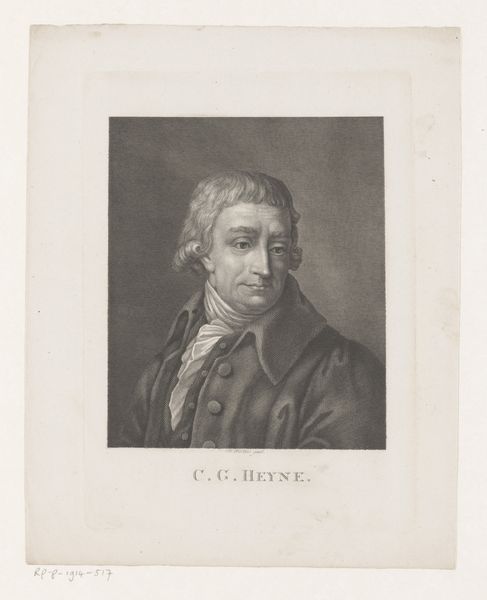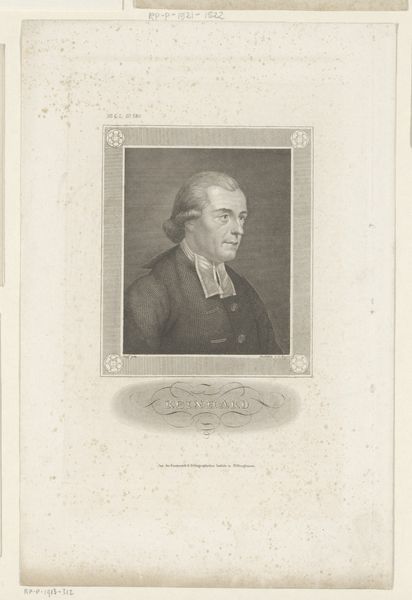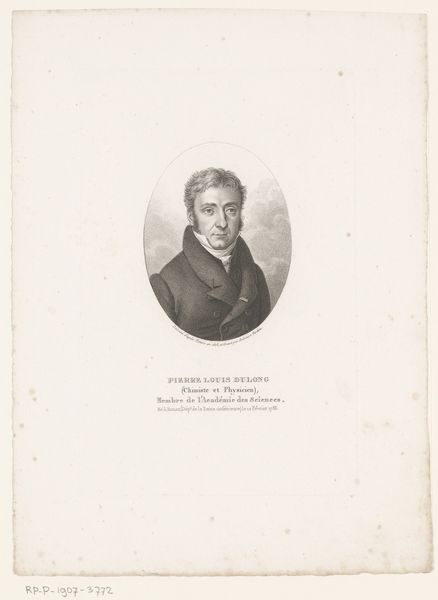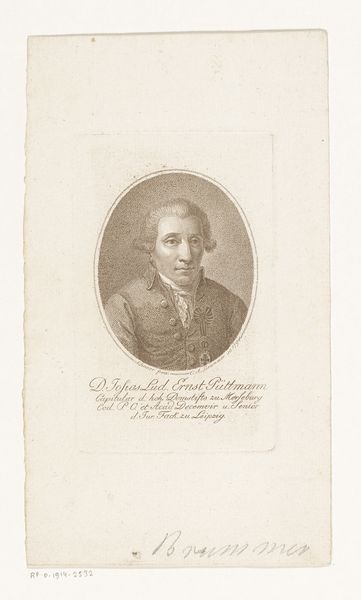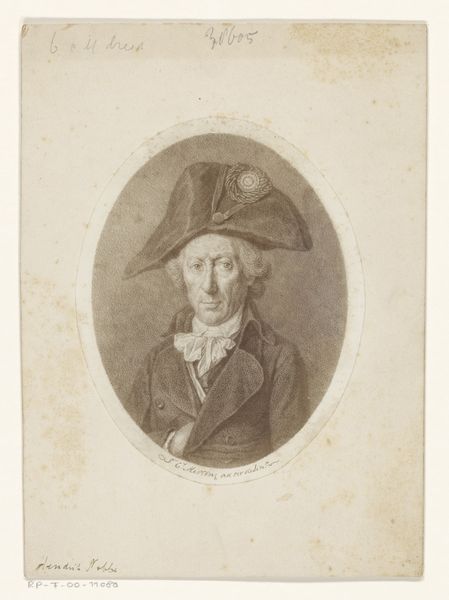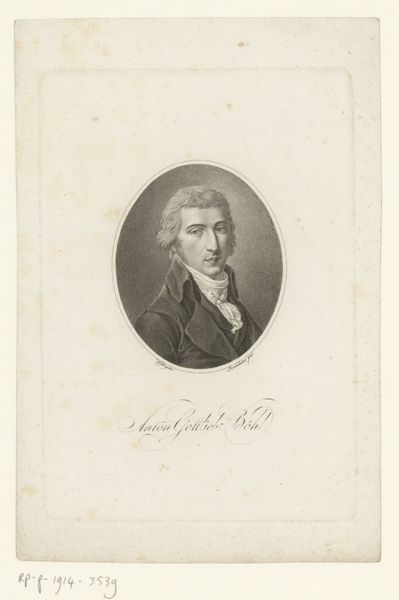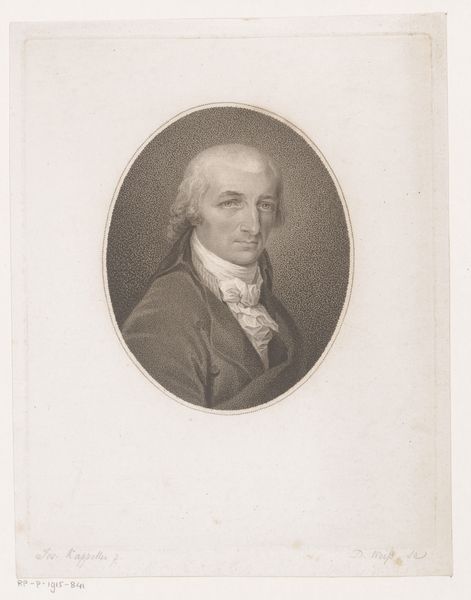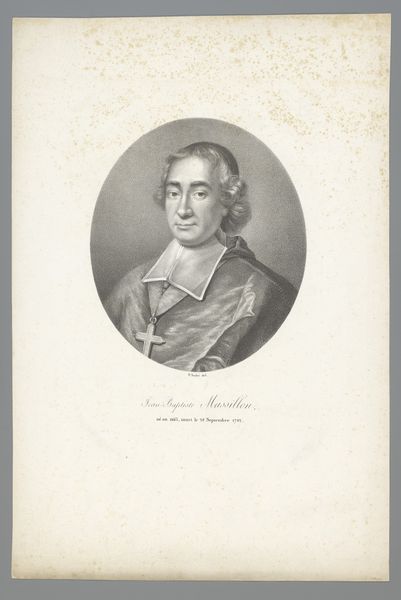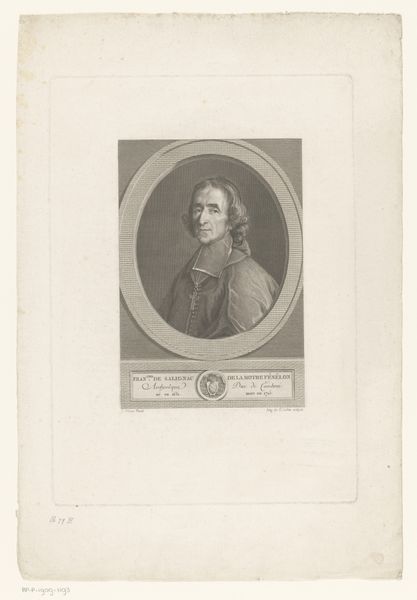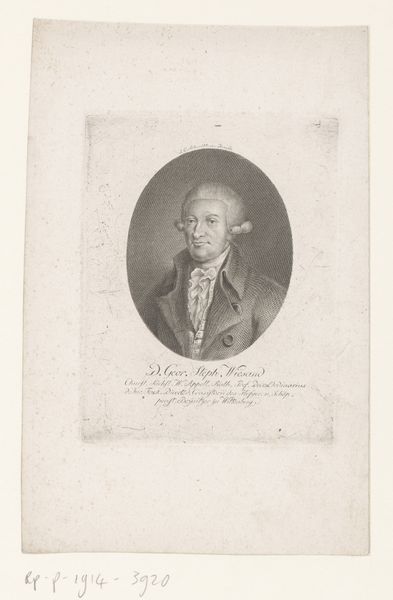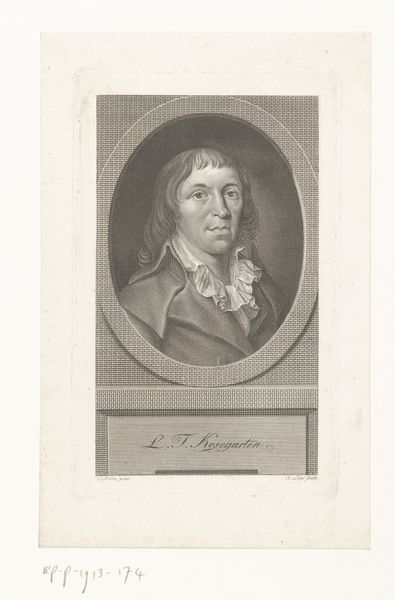
print, engraving
#
portrait
#
neoclacissism
# print
#
engraving
Dimensions: height 264 mm, width 198 mm
Copyright: Rijks Museum: Open Domain
This is a portrait of Philipp Jakob Scheffauer, made by Johann Pleikhard Bittheuser using etching and engraving. Look closely, and you'll see the way Bittheuser has used lines to create areas of tone, defining the sitter’s face and clothing. These lines weren’t drawn directly, but rather bitten into a metal plate with acid, and then inked and printed onto paper. It's a mechanical process, born out of the rise of print culture in the early modern period, when there was an increasing demand for images. Etching and engraving allowed for relatively quick reproduction, making art more accessible. Yet, this depended on a specialized skill set, which positioned artists like Bittheuser within a complex economy of image-making. Think of the amount of labor involved: from preparing the metal plate, to the precise work of engraving, to the printing itself. This wasn't just an act of artistic expression, but a skilled trade, reflective of its time. Recognizing the modes of production helps us to understand its cultural significance.
Comments
No comments
Be the first to comment and join the conversation on the ultimate creative platform.
